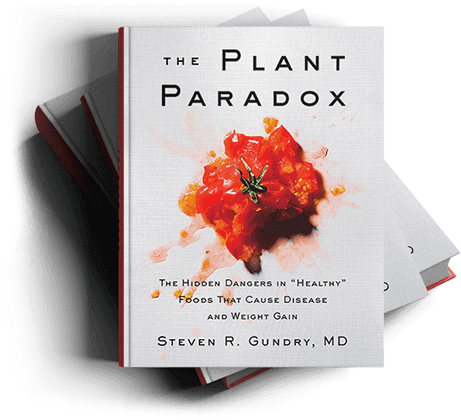 Why This is Our Favorite Healthy Way of Eating
Why This is Our Favorite Healthy Way of Eating
So it turns out I have a rarish disease called Fibromuscular Dysplasia.
Often, it’s only diagnosed after the person has had a stroke or brain aneurism; sometimes, only after it’s too late. That’s due to the fact that the symptoms are subtle and hard to tie together in any meaningful way. Slightly elevated blood pressure. Stubborn whooshing in the ears. Some of us—me included—can always feel our heartbeats. Fatigue is a big one—both muscular and general.
The thing is, if that’s all you’ve ever known, you tend to think it’s normal, and then FMD may decide to assure you it’s not. I had a stroke at 39 years of age and wound up at the hospital with a coin flip between life and death. Since then, both types of fatigue have been consistent companions and in recent studies they’ve discovered FMD and early onset osteoarthritis have some mysterious connection as well. So I have that going for me. That’s a line from Caddyshack. Very important movie.
I’m only revealing that part of my life to you to assure you nutrition currently plays a giant role in Heather and my collective life, and for the past 8 years, we’ve searched everywhere for a diet that would not only help with fatigue, but have measurable anti-inflammatory properties as well. And it took awhile, because there are about a hundred thousand nutritionists and doctors out there with a hundred thousand plans. Which is a good thing. They care. So do we, so we’d like to help you out. If you’d like.
In all, I would say we gave about two dozen a shot. Many of the usual suspects, some not so much. We stuck with Dr. Greger’s “How Not to Die” nutritional plan for quite a long time. We lost some weight and felt pretty good, but finally we had to say enough with the beans. Way. too. many. beans. I also tried blah blah’s blah blah blah. I felt like she was definitely onto something, but for whatever reason I was steel feeling inflamed and bloated. Maybe I was doing it incorrectly.
Finally I stumbled upon on online video about the dangers of the mighty lectin. I was intrigued. I watched some more. I learned that in this man’s opinion, lectins greatly contribute to inflammation and that eliminating them from your diet will greatly contribute to your comfort. We’ll circle back to the lectins in a bit. There was a book. Heather decided to order it. It has been an enormous blessing for us.
What was it? Dr. Steven Gundry’s “The Plant Paradox.” We stuck with it, and it’s our favorite. After a couple of months, we knew it was going to be Here to There’s nutrition plan of choice for anyone who chooses to leave it up to us. We couldn’t be more confident.
Inflammatory foods can increase your risk of heart disease and cancer, impede getting rest and a good night’s sleep, increase joint pain, damage bones—it has even been linked with depression. Every human being on Earth would benefit from this diet. Imagine how much it will help you in your first few days after surgery. It will not only lesson your pain; it will shorten your recovery time measurably.
So who is Dr. Steven Gundry? Dr. Gundry is a former cardiologist and heart surgeon who graduated cum laude from Yale in 1972. He founded both the International Heart & Lung Institute and the Center for Restorative Medicine. For 16 years, as the Chairman and Head of Cardiothoracic Surgery at the Loma Linda University School of Medicine, Dr. Gundry and a colleague performed more pediatric heart transplants than anyone else in the world.
In the early 2000’s, he began treating some of his cardiology patients focusing on a diet-based approach. They all showed improvement. Some of them experienced a reversal in the progression of their heart disease. Dr. Gundry ended up starting his own practice so he could explore these results further. A ridiculous number of success stories and three books later, and a wife and husband named Heather and Matt are convinced. It’s a keeper.
Okay, now a bit of an aside. Full disclosure, I included that last bit because I know you’re going to Google him as soon as you’re done reading this post. In his videos, he can come across as a little goofy. Likeable. But, you know. Anyway, since you read that before you watch his videos you already know he’s clearly a very smart man who has enjoyed a rewarding and crazy successful career. He’s got a brain in that noggin, as my favorite grandfather used to say. Referring to maybe two people who ever lived.
Time to talk lectin. Lectins are carbohydrate-binding proteins, macromolecules that are highly specific for sugar moieties of other molecules. There you have it. That’s from Wikipedia. Wonder who wrote that. More simply put, they are a large family of protein compounds that bind to other molecules, usually carbohydrates.
In an interview with The Independent, Dr. Gundry explained how they operate: “Lectins bind to receptors on the surface of each cell lining the gut, breaking down the tight junctions that normally make an impenetrable barrier between the intestinal contents including bacteria and ourselves.”
The result is big enough “holes” in your stomach lining that allow lectins into the bloodstream. Our immune system notices a foreign body and sends in the troops. The result? Inflammation.
Losing the lectins has worked incredibly well for Heather and me. With the addition of a pressure cooker, we eat pretty much everything we did when we were simply on a plant-based diet. We even eat a lot of beans. We make tomato sauce. With the pressure cooker, it’s not restrictive at all. We get plenty of fiber. And we just feel so much better.
Please let us know if you’d like us to put together a nutrition plan that will help you heal, decrease your inflammation, and get you feeling better more quickly. And if you’d like it to adhere to the Plant Paradox diet, so much the better.
Feel good.








